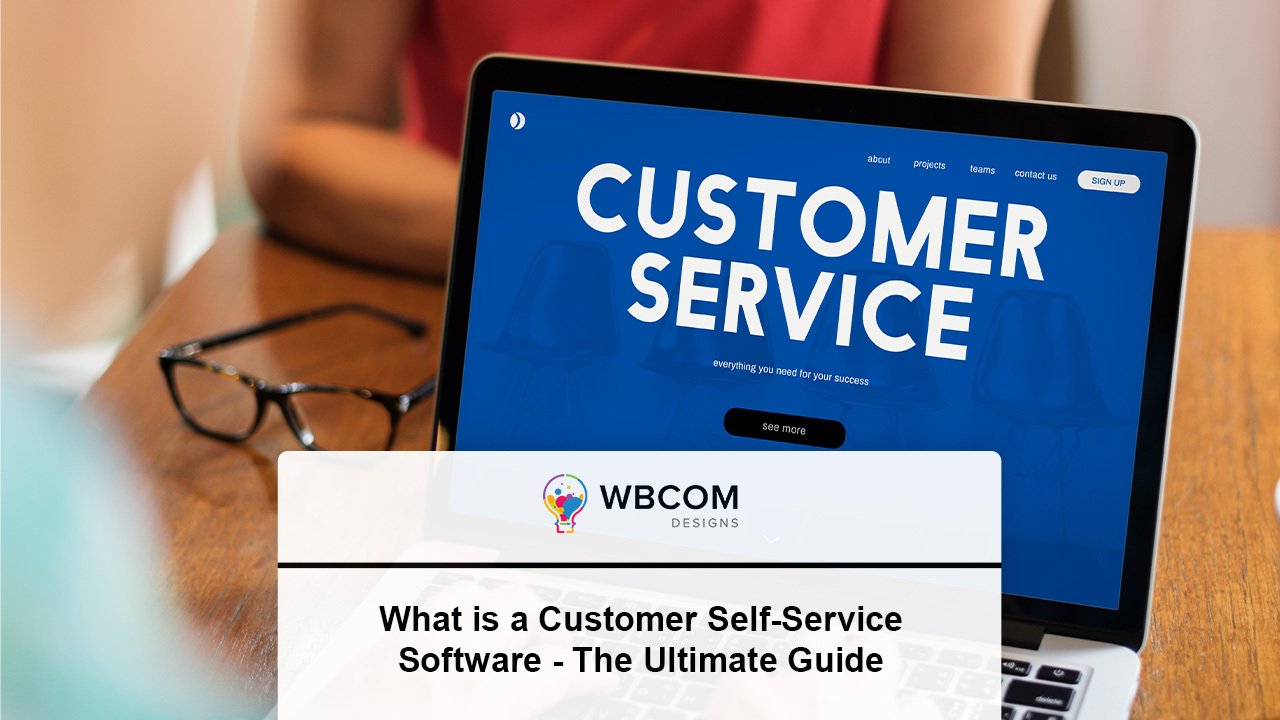Imagine this: you’re a customer, and you have a problem with a product or service you purchased. You try calling the customer support line, but you’re put on hold for what seems like an eternity. You finally get through to a representative, but they don’t seem to understand your issue, and you’re transferred to another department. This process continues until you’re at the end of your rope, feeling frustrated and unheard.
Now, picture the same scenario, but with a different outcome. You visit the company’s website, and within a few clicks, you’re able to find a comprehensive FAQ section that addresses your problem. If that doesn’t solve the issue, you’re able to use self-service software, including a customer service chatbot, that guides you through the steps to troubleshoot and resolve the problem. The end result? You’re a satisfied customer, and the company has saved time and resources that would have been spent on a lengthy customer service call.
This is the power of customer self-service software, and in this ultimate guide, we’ll explore everything you need to know about it. From the benefits it provides to the different types available, and how to choose the right one for your business, we’ve got you covered. So, whether you’re a business owner or a customer looking for a better experience, read on to discover the ultimate guide to customer self-service software.
Benefits of Customer Self-Service Software
Customer self-service software has become increasingly popular in recent years, and for good reason. It provides a wide range of benefits to businesses and customers alike, making it an essential tool for any company that wants to remain competitive in today’s marketplace. Here are some of the key benefits of customer self-service software:
- Improved customer satisfaction: One of the most significant benefits of customer self-service software is that it allows customers to get quick and easy access to the information they need. This means they don’t have to wait on hold for long periods or deal with frustrating phone trees to get the help they need. By providing a user-friendly and intuitive interface, customers can easily find the answers to their questions, which results in improved customer satisfaction.
- Reduced customer service costs: By offering customer self-service options, businesses can significantly reduce their customer service costs. Self-service software allows customers to handle many of their inquiries on their own, which means fewer calls and emails to the support team. This, in turn, reduces the number of customer service representatives needed, saving companies money on labor costs.
- Increased efficiency and productivity: Customer self-service software can also increase efficiency and productivity within a company. By providing customers with a self-service option, businesses can free up their support team to focus on more complex issues. This can lead to faster response times, increased productivity, and higher overall efficiency.
- 24/7 availability and convenience: Customer self-service software is available 24/7, which means customers can get the help they need, no matter the time of day. This level of convenience is essential for customers who have busy schedules or live in different time zones. By offering self-service options, businesses can provide their customers with a higher level of service and support, which can lead to increased customer loyalty and retention.
- Better customer insights and analytics: Finally, customer self-service software can provide businesses with better insights and analytics into their customers’ needs and behaviors. By tracking customer interactions with the software, companies can gain valuable insights into what their customers are looking for, what issues they’re having, and how they prefer to interact with the company. This data can be used to improve the overall customer experience and make data-driven decisions to better serve their customers.
Types of Customer Self-Service Software
Customer self-service software comes in various forms, and each type offers unique advantages and benefits to businesses and customers. Here are some of the most common types of customer self-service software:
- Knowledge base and FAQs: A knowledge base is a collection of articles, documents, and guides that provide customers with answers to frequently asked questions (FAQs). A knowledge base can be accessed through a company’s website or mobile application, and it can be organized by topics, keywords, or categories. This type of customer self-service software is beneficial for businesses that receive a high volume of routine inquiries.
- Interactive voice response (IVR) systems: Interactive voice response (IVR) systems are automated phone systems that allow customers to interact with a computerized voice to get the help they need. IVR systems can be programmed to provide customers with information on their account balance, order status, or other basic inquiries. This type of customer self-service software is beneficial for businesses that receive a high volume of phone calls.
- Chatbots and virtual assistants: Chatbots and virtual assistants are computer programs that can simulate human conversation using natural language processing (NLP) and artificial intelligence (AI) technologies. These programs can answer customer inquiries, resolve simple issues, and even initiate sales or marketing interactions. Chatbots and virtual assistants can be integrated into a company’s website, mobile application, or messaging platform.
- Self-service portals: Self-service portals are secure online platforms that allow customers to manage their accounts, access billing information, make payments, and submit support tickets. Self-service portals are beneficial for businesses that have recurring customers who need to manage their accounts regularly.
- Mobile applications: Mobile applications are downloadable software programs that allow customers to interact with a company’s products or services using their smartphones or tablets. Mobile applications can provide customers with a variety of self-service options, such as account management, order tracking, and support. Mobile applications are beneficial for businesses that have a significant mobile customer base.
- Social media and messaging platforms: Social media and messaging platforms are increasingly being used as self-service channels by businesses. Customers can interact with a company’s social media account or messaging platform to get support, ask questions, or provide feedback. Social media and messaging platforms are beneficial for businesses that want to offer customers multiple communication channels and reach a broader audience.
Choosing the Right Customer Self-Service Software for Your Business
Choosing the right customer self-service software for your business can be a challenging task, given the variety of options available in the market. Here are some key considerations to help you select the best customer self-service software for your business:
- Assessing your customer needs and expectations: Before choosing a customer self-service software, it’s essential to understand your customer’s needs and expectations. Consider the type of customer inquiries you receive most often and the channels they prefer to use. This information will help you choose a self-service software that meets your customer’s needs and delivers an excellent customer experience.
- Evaluating software features and capabilities: Different self-service software solutions offer varying features and capabilities. Consider the features you need most, such as knowledge base management, chatbot capabilities, and mobile access. Evaluate the software’s user interface and ease of use, as well as its ability to integrate with other systems and software.
- Considerations for implementation and integration: Choosing a customer self-service software that’s easy to implement and integrate with your existing systems is critical. Evaluate the software’s implementation process, including setup and training requirements. Consider any integration requirements, such as integration with your CRM or support ticketing systems.
- Cost and ROI analysis: The cost of a customer self-service software can vary widely, depending on the software’s features, capabilities, and implementation requirements. Consider the cost of the software and any ongoing maintenance fees, as well as the potential return on investment (ROI) from implementing the software. Evaluate the software’s ability to reduce customer service costs, improve customer satisfaction, and increase efficiency and productivity.
Best Practices for Implementing Customer Self-Service Software
Implementing a customer self-service software can be a game-changer for your business, improving customer satisfaction, reducing costs, and increasing efficiency. However, it’s essential to follow best practices to ensure a successful implementation. Here are some best practices to consider when implementing a customer self-service software:
- Designing an intuitive and user-friendly interface: The interface of your self-service software should be user-friendly and intuitive, making it easy for your customers to find what they need quickly. Ensure that the software has clear navigation, a search function, and easy-to-understand language. The interface should be responsive and optimized for mobile devices to provide a seamless experience across all devices.
- Providing comprehensive and accurate information: Your self-service software should contain comprehensive and accurate information to answer your customer’s most common questions. Ensure that the software has a well-organized knowledge base, FAQs, and easy-to-understand tutorials. Consider incorporating multimedia content, such as videos and images, to help explain complex concepts.
- Ensuring multi-channel accessibility and consistency: Your self-service software should be accessible across multiple channels, including your website, social media, email, and messaging platforms. Ensure that the information provided is consistent across all channels to avoid confusion and maintain a seamless experience for your customers.
- Regularly updating and maintaining the software: It’s essential to regularly update and maintain your self-service software to ensure that it remains accurate and up-to-date. This includes updating content, adding new features, and fixing any issues promptly. Ensure that you have a dedicated team responsible for maintaining and updating the software regularly.
- Encouraging feedback and improving based on customer insights: Encourage your customers to provide feedback on the self-service software and use this feedback to continuously improve the software. Consider implementing a feedback mechanism within the software, such as a rating or comment system, to collect customer insights.
Wrapping Up Words
In conclusion, a customer self-service software is an essential tool for any business that wants to provide excellent customer service while reducing costs. It allows customers to solve their problems quickly and easily, without the need for human intervention. By implementing a self-service software, businesses can increase customer satisfaction, reduce the workload on their support team, and ultimately save time and money. With the right self-service software, businesses can streamline their operations and provide an exceptional customer experience that will keep customers coming back for more.






